- What is yoga mudra
- Types
- Mudras List
- How to do yoga mudras
- Science
- Are Mudras scientifically proven?
- Yoga Mudras FAQs
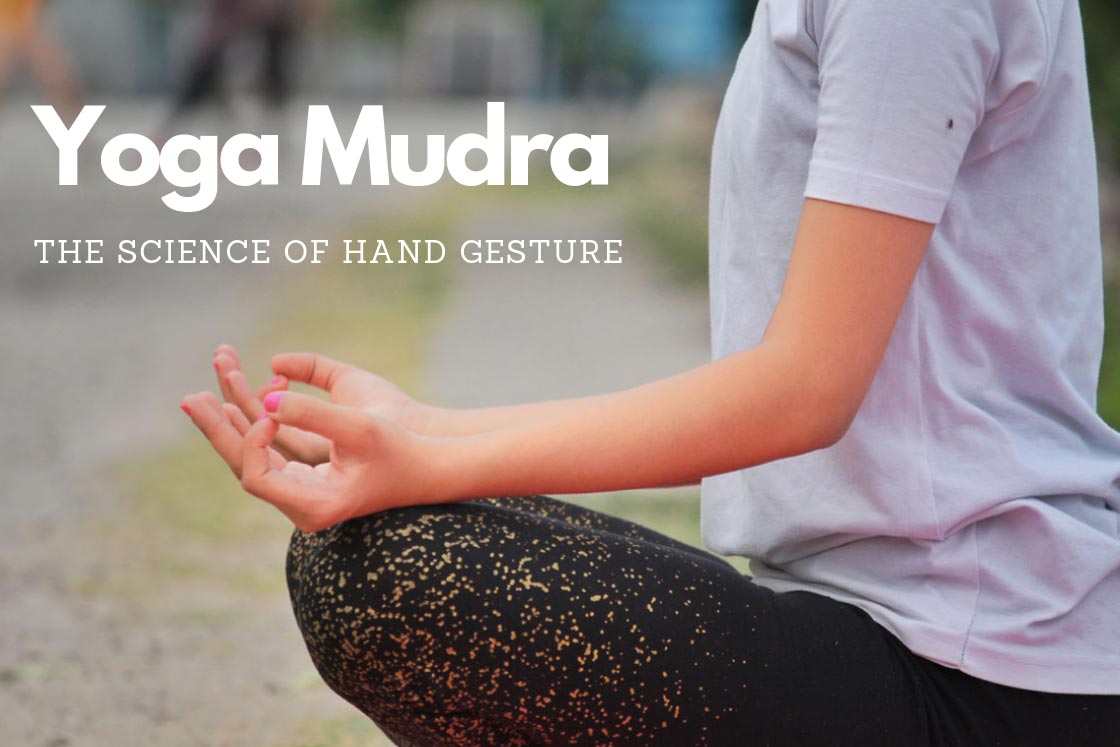
Our hands contain the maximum number of Nadis which when pressed or arranged in a certain way creates an ‘energy circuit’ to redirect the flow of Prana (life-force) inside the body.
The practice of yoga mudras comprises conscious effort of creating the energy circuits in our body by the subtle physical action of hands, known as ‘gesture’, ‘seal’, or ‘mark’.
A 1400 C.E. Tantric text kularnava Tantra [efn_note] kularnava Tantra https://archive.org/details/ArthurAvalonKularnavaTantraEng [/efn_note] traces the word ‘Mudra’. According to it, Mudra is derived from two Sanskrit words ‘Mud‘ means ‘Bliss’ and ‘drava‘ is called to liquid, here it means ‘bring forth’ (a quality of liquid). This can be understood as Mudra is the practice ‘which pleases the SELF and melts the mind so the hidden bliss inside can be brought forth to the seeker.’.
What is Mudra in Yoga?
A mudra is the gesture or energy seal of a specific body position that shows a state of consciousness of our subtle body. In yoga, mudras can be Hand gestures (Hasta Mudra), or gestures made by the head (Mana mudra), or the whole body (Kaya mudra) as in the yoga poses.
Mudras are the same as any other physical expressions of laughing, crying, dancing, or singing. The way physical expressions are the external manifestation of how we feel or what we do, in the same manner, mudras expresses subtle body emotions. When a mudra is performed, its gesture brings forth these emotions and connects us with our real nature.
Practicing a yoga mudra may sound strange to you in the first place but unconsciously we all are accustomed to the different gestures in our daily life. When we are sad or in deep thought or in joy, these gestures automatically comes out. Indeed, many gestures we use in nonverbal communication are already part of mudras in yoga.
For example, Namaste is a common hand gesture used to welcome or in greeting. In mudras practice, it’s called Anjali Mudra.
In yoga, mudras particularly used for its therapeutic use but in traditions like Hinduism, Buddhism, and Jainism different mudras can be seen as part of classical rituals, folk dance, or mantra chanting. It shows, a mudra could contain many aspects of art and has indescribable meaning behind it.
What does mudras do in our body?
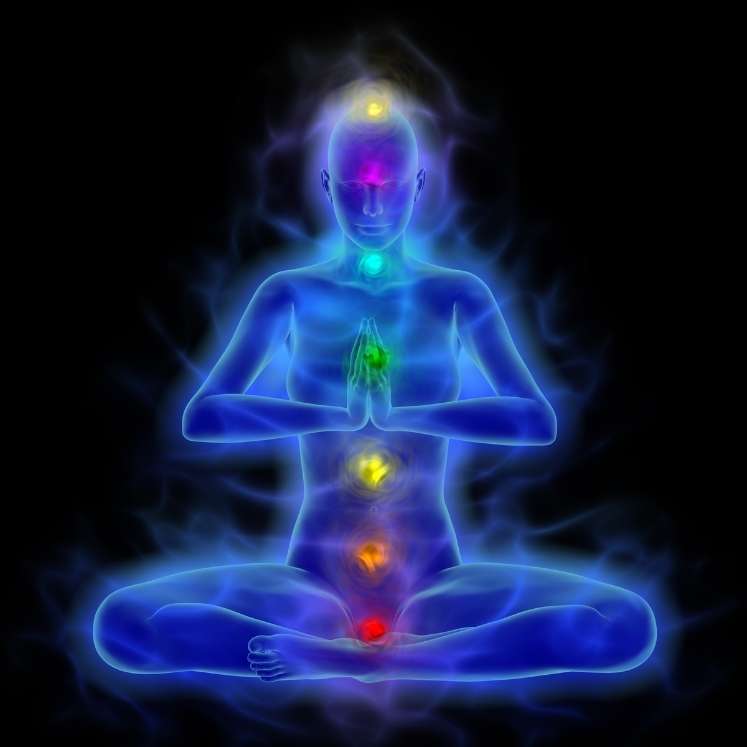
As stated earlier, a mudra can be understood by comparing it with nonverbal communication. This nonverbal communication connects your gross body with the subtle one so that the energy that is deep inside you can be revealed! The subtle body energy is called elemental energy that is made up of five elements.
Indeed, a mudra actually harness the energy in our hands that is present in the form of five elements.
When we regularly practice a mudra for some fixed amount of time, it involves holding hands, fingers, or whole body in a specific position. This specific position of mudra creates the pranic circuit in our subtle body. A pranic circuit can be understood as the closed-loop of Nadis which promotes the flow of energy.
In yogic science, it’s said, the body gets diseases when Prana (life-force) stuck at one place or there is a lack of Prana in our body. The pranic circuit that a mudra makes keeps prana flowing indisputably inside our body. And, to prevent the lack of Prana, the loop that mudra creates doesn’t let Prana leaking out. This way a mudra helps in keeping the body diseases free, boost the energy level and enhances concentration.
Types of Mudras
All mudras of yoga can be categorized into 5 types. This categorization is based on the body part we use in a specific mudra to channelize the energy (hand, sensory organs eyes like tongue, eyes, or ears, skeletal muscles, or perineal muscles).
- Hasta Mudra (Hand Gestures) – Performed using fingers and hands.
- Kaya Mudra (Postural Gestures) – Involved the whole body.
- Mana Mudra (Head Gestures) – involved sense organs (eyes, nose, tongue, lips & ears).
- Bandha Mudra (Lock Gestures) – Performed using 3 bandhas or more precisely subtle skeletal muscles (vocal, respiratory & pelvis).
- Adhara Mudra (Perineal Gestures) – Involves pelvic organs
In the below infographics, 10 easy yoga mudras with their meaning and benefits are shown. Click the image to check this infographic!
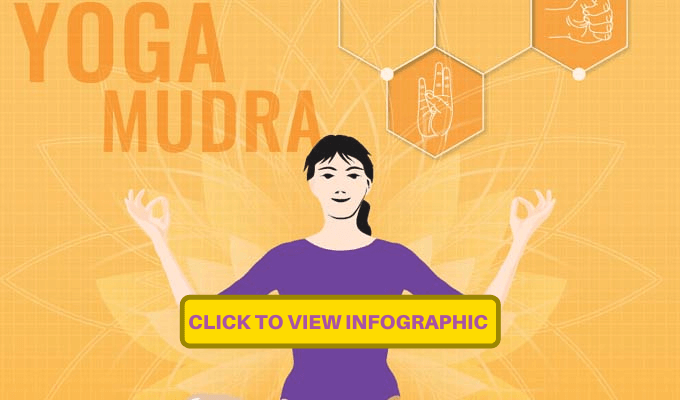
Mudras List
Below is the list of each type of mudras with their meaning and description.
1. Hasta Mudras (Hand Mudras)
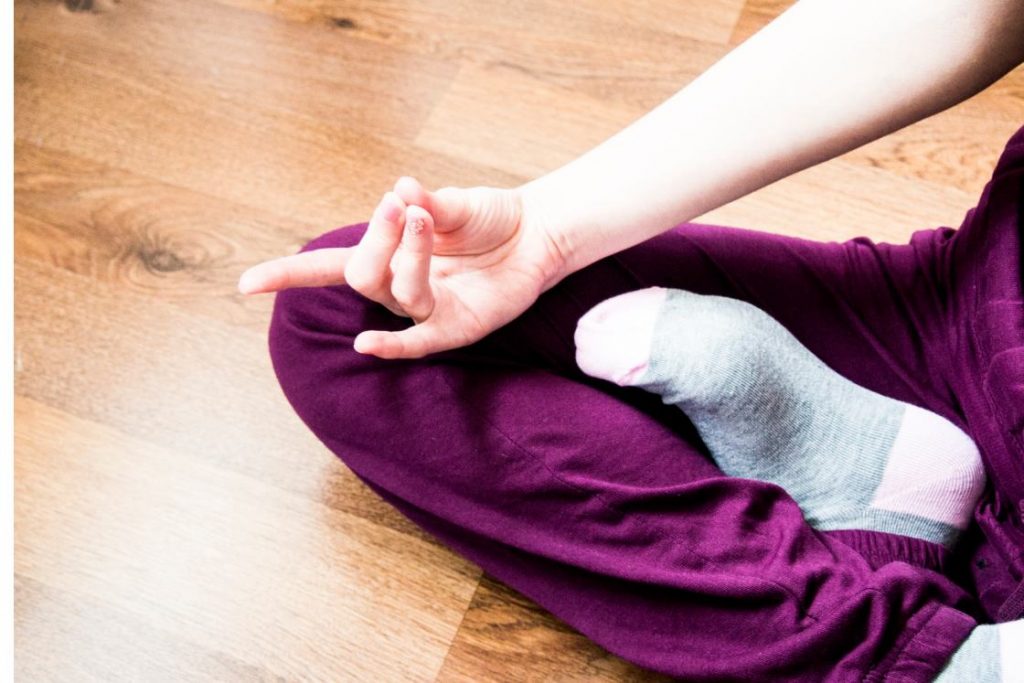
Hand mudras are most practiced among all types of mudras, particularly used in meditation and pranayama session. These mudras work based on 5 elements theory and known for the therapeutic benefits.
| S.N | Mudra | Meaning | Picture | Description | Benefits |
|---|---|---|---|---|---|
| 1. | Gyan Mudra | Gesture of knowledge |  | Index fingertip touches thumb, hand upturned. Rest three fingers extended. | Enhances memory, concentration. Gives a sense of security & groundedness |
| 2. | Apana Mudra | Gesture of Apana |  | Middle and ring fingertips touches thumb. Rest two fingers extended. | Helpful in diabetes and constipation. Strengthens leg joints |
| 3. | Prana Mudra | Life-force seal |  | Ring and little fingertips touches thumb. Rest two fingers extended. | Prevents hair fall and Increase lung efficiency. |
| 4. | Surya Mudra | Gesture of sun’s energy |  | Press thumb on the second phalanx of the ring finger and ring fingertip touches the base of thumb. Rest three fingers extended. | Panacea mudra for weight loss, maintain metabolism and reduce Cholesterol. |
| 5. | Varun Mudra | Gesture of water |  | Press thumb on the second phalanx of the little finger and little fingertip touches the base of thumb. Rest three fingers extended. | Helpful in dehydration, cleans blood, and glows skin. |
| 6. | Back Mudra | Back-pain relief gesture |  | Right hand – Thumb touches middle and ring finger Left hand – Thumb touches index finger | Relieves back pain and muscles cramps. |
| 7. | Apana Vayu Mudra | Gesture of relieving heart disease |  | Thumb joining middle and ring fingertips while index finger bend to the base of thumb. | Best mudra for heart problems, prevents heart attack and improves digestion. |
| 8. | Shunya Mudra | Gesture of emptiness |  | Thumb pressing second phalanx of middle finger. Rest three fingers extended | Treat ear related problems, cure numbness and motion sickness. |
| 9. | Rudra Mudra | Gesture of fierce energy |  | Thumb touching tip of ring and index fingers. Rest two fingers extended. | Cure of dizziness, lowers blood pressure and burn belly fat. |
| 10. | Adi Mudra | Primal gesture or first gesture |  | Thumb fold inside the curled fingers. | Increase oxygen flow in blood, gives mental clarity |
| 11. | Linga Mudra | Attitude of the masculinity |  | Both hands fingers clasped and left thumb is erect | Cures breathing disorders, Prevent hypothermia |
| 12. | Anjali Mudra | Gesture of salutation |  | Both hands finger align in front of each other, tip upward | Balance left and right hemisphere, improves focus. |
| 14. | Akash Mudra | Space gesture |  | Thumb touches tip of middle finger. Rest three fingers extended. | Helpful in migraine, hearing loss, and overcome calcium deficiency. |
| 15. | Padma Mudra | Lotus flower gesture |  | Little finger and thumb touches side-by-side then spread all fingers in a circular direction. | Brings creativity, calms the anxious mind, and balances heart chakra. |
| 16. | Ganesha Mudra | Gesture of lord ganesha |  | Right hand back, left hand forward – interlock fingers at second phalanx from inside. | Increase lung capacity, reduce neck pain and boost self-confidence. |
| 17. | Matangi Mudra | Gesture to evoke the power of Goddess Matangi |  | Interlace both hand fingers and then point both middle fingers up. | Evoke self-confidence, helps in insomnia and relax jaw muscles. |
| 18. | Dharmachakra Mudra | Buddha’s Gesture wheel of dharma |  | Make gyan mudra with both hands. Now touch right gyan mudra with left middle fingertip facing outside. | Deepen meditation, gives grounding sense, and calms the mind. |
| 19. | Brahma Mudra | Gesture of God Brahma or Attitude of creation god |  | Fold thumb inside curl fingers then press fingers at knuckles. | Balance thyroid gland secretion, helpful in irregular menstrual cycle. |
| 20. | Vajra Mudra | Gesture of Fiery Thunderbolt |  | Middle, ring and little fingertips touches thumb. Index finger extended. | Removes stiffness of muscles, detoxes the lungs. |
| 21. | Surabhi Mudra | Cow gesture or wish-fulfilling gesture |  | Ring fingertips of both hand touches opposite little fingertips, and in same manner, middle fingertips touches opposite index fingertips | Enhances creativity and helpful in getting wish fulfillment. |
| 22. | Bhumisparsha Mudra | Buddha’s earth touching gesture |  | Left hand on lap facing upward, and the right hand points to the ground touching | Increase concentration, removes negativity and aggression. |
| 23. | Shankh Mudra | Conch shell gesture |  | Encircle left thumb with 4 fingers of right hand and then extend left hand 4 fingers and right hand up. | Overcomes fear of speaking, purifies nadis, and improve functioning of the larynx (voice box). |
| 24. | Hakini Mudra | Gesture of goddess hakini or mind’s attitude |  | Join all fingertips and thumb of both hands each other and spread fingers wide. | Best mudra to increase brain power and balances 3 doshas. |
| 25. | Kubera Mudra | Gesture of wealth god |  | Join the index and middle fingertips to the thumb tips. Then curl the little and ring fingertips to the palm. | Gives luck, confidence, and peacefulness. Opens blocked nose and ear. |
| 26. | Yoni Mudra | Gesture of womb |  | Join all fingertips to each other, stretch thumb upwards, then bend middle, ring, and little finger so that the back of the fingers are touching. | Helpful in fertility problems, and removes all tiredness and stress when practiced at night before going to sleep |
| 27. | Jnana Mudra | Gesture of consciousness |  | Thumb and index fingertip touching, rest fingers extended. For beginners – Index fingertip touching inside root of thumb. Palm facing up | Improves concentration, endocrine system and calms the mind. |
| 28. | Vishnu Mudra | Gesture of preserver god vishnu |  | Index and middle finger bend down towards palm. | Reduce anger, purify nadis, and helpful in heart diseases. |
| 29. | Vayu Mudra | Gesture of air element |  | Thumb pressing second phalanx of index finger | Overcome gastric problems and builds immunity. |
| 31. | Shakti Mudra | Gesture of strength |  | Encircle thumb inside index and middle fingers, touch them at back, raise ring and little fingertips – extend them up. | Helpful in sleeplessness, rectifies the painful urination problem and menstruation discomforts |
| 31. | Abhaya Mudra | Gesture of fearlessness |  | Lift right hand to the chest level then open palm facing to the front. | Helps in conquering the fear and settle emotions. |
| 34. | Dhyana Mudra | Gesture of meditation |  | Place right hand over left hand so fingers aligning each other. Now touch both thumb tip. | Deepen the levels of meditation and activate left and right side of brain. |
| 35. | Chinmaya Mudra | Gesture of awareness |  | Curl middle, ring and little finger to palm and touch index fingertip with thumb. | Prevents memory loss and cures insomnia. |
| 36. | Prithvi Mudra | Gesture of earth element |  | Ring finger tip touching thumb. Rest three fingers extended. | Weight gain and healing body tissues. |
| 37. | Karana Mudra | Buddha’s gesture of expelling negativity |  | Middle finger tip touching thum, ring finger curl parallel to middle, and rest two fingers extended. | Fill mind with positivity, drives energy forces inwards. |
| 38. | Bhramara Mudra | Gesture of humming bee |  | Index finger curl down to base of thumb, thumb touching outside of middle finger, and rest two fingers extended. | Beneficial to get rid of allergies, and treats common cold, running nose, tonsillitis. |
| 39. | Pushan Mudra | Gesture of nourishment or digestion |  | Right hand – touch index and middle finger tip to thumb tip. Left hand – touch ring and middle finger tip to thumb tip. Rest two fingers extended. | Best mudra for digestion, eliminate blockage and toxins. Also, cures nausea, flatulence, constipation. |
| 40. | Mushti Mudra | Fist gesture of anger management |  | Hold hand in a fist with thumb placed over the ring finger. | Relieve negative emotions and lower blood pressure. |
| 41. | Garuda Mudra | Eagle gesture |  | Hold onto your thumbs. Place right hand on the apex of left hand. | Inculcate fearlessness, and useful in get rid of lethargy and fatigue |
| 42. | Vitraka Mudra | Gesture of discussion |  | Join the tips of the thumb and the index fingers together, palm facing forward at the heart level. | Encourages wisdom, uplifts energy, and develops a sense of clarity |
| 43. | Merudanda Mudra | Gesture of erect spine |  | Extend thumbs of each hand upward, and curl other fingers into the palm. | Strengthens the spine and eliminates restlessness from the mind. |
| 44. | Varada Mudra | Buddha’s boon dispenser gesture |  | Right hand held out, with palm uppermost and the fingers pointing downwards. | Make seeker humble, cultivate forgiveness quality, |
| 45. | Bhairava Mudra | Fierce gesture of lord Shiva |  | Place right hand on the cup of your left hand. Tips of the fingers of both hands facing opposite directions. | Soothing and instant relieving effects on anxiety, stress, and mood swings |
| 46. | Asthma Mudra | Asthma relieving gesture |  | Bend and press middle fingers of both hands at the fingernails. Palms should press together gently with the other fingers remaining straight. | Improves breathing, removes blockage and toxins from lung, |
| 47. | Uttarabodhi Mudra | Buddha’s gesture of enlightenment |  | Interlock both hand fingers. Now extend index fingers up, touching tip together and thumb downwards. | Boosts confidence, promotes optimism, and inculcates fearlessness |
| 48. | Ushas Mudra | Attitude of dawn |  | Clasp hand together with finger interlaced. Thumb pointing up. | Regulates irregular menses, regulates the proper hormonal flow. |
| 49. | Mahasirs Mudra | Great head gesture |  | Touch index and middle finger tip with thumb tip, curl ring finger to base of thumb, and extend little finger. | Cures sinus issues, relieves eye strain and improves concentration |
| 50. | Kalesvara Mudra | Gesture of time god |  | Join first and second phalanx of both hand fingers, extend middle fingers up and join them. Join thumb below creating a heart shape. | Helpful to get rid of the habit of procrastination, brings serenity, and develops adaptability |
2. Kaya Mudra (Postural Gesture)
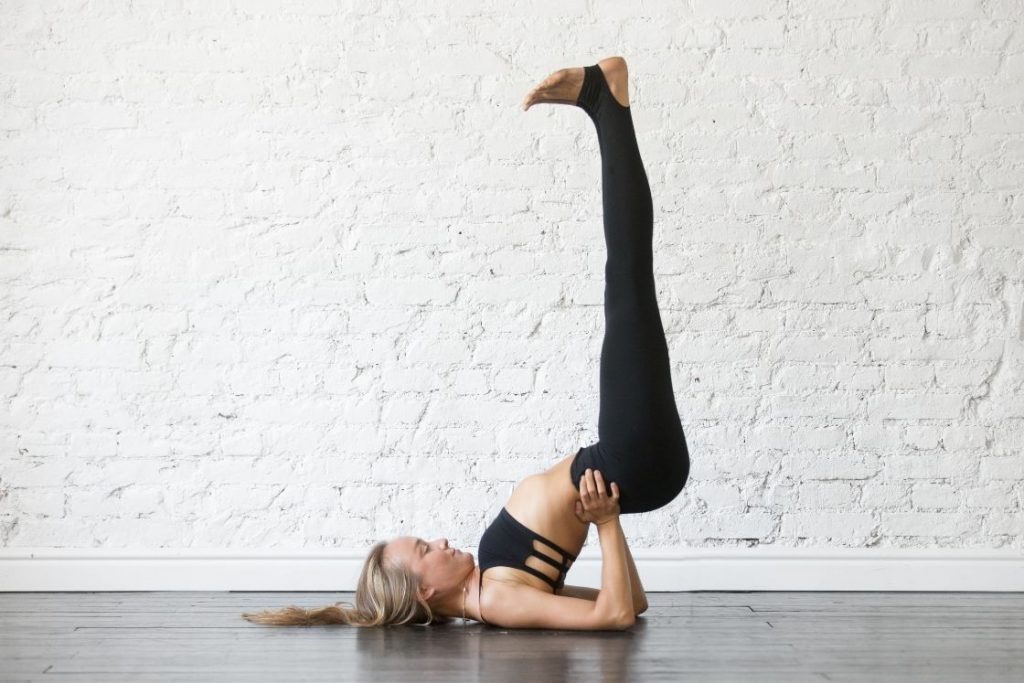
Kaya mudras are similar to various yoga asanas because in these mudras whole body involvement is required. It requires intense concentration to hold the body in a particular asana (or pranayama) & mudra.
| S.N. | Mudra | Meaning | Picture | Description | Benefits |
|---|---|---|---|---|---|
| 1. | Viparita Karani | Inverted gesture | 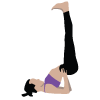 | Body in inverted posture on shoulders and the back is supported by hands. | Release tension from cramped feet & legs, increases appetite |
| 2. | YogaMudra | Psychic union pose |  | In padmasana, catch the left wrist by the right hand at the back and bend forward to forehead touching the ground. | Improves muscle tone, stretches muscles of the trunk and the neck. |
| 3. | Pashinee Mudra | Folded psychic attitude | 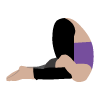 | From halasana, bend knees to touch the sides of ears and shoulders. Then wrap the arms tightly around the legs and relax | Increases spine flexibility and tones abdominal organs. |
| 4. | Manduki Mudra | Frog gesture | 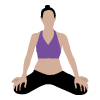 | In bhadrasana close the mouth, then rotate tongue inside mouth touching upper palate. | Prevent graying of hair, aids in digestion, enhances the sense of taste |
| 5. | Tadagi Mudra | Gesture of the pond | 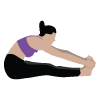 | From bending forward in dandasana, hold the breath, pull abdominal muscles in hollow the abdomen. | Relieves physical stress and reduces obesity. |
3. Mana Mudra (Head Mudra)
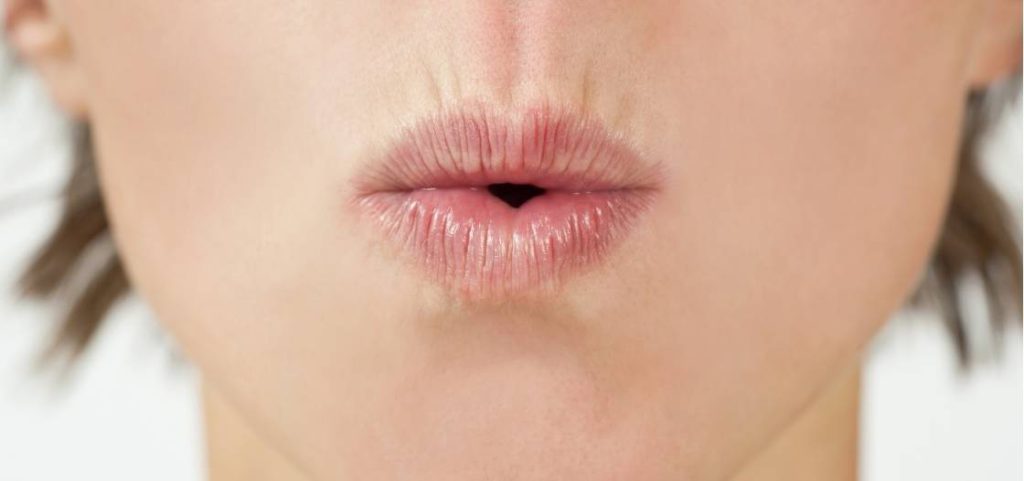
Head mudras comprise the practice to focus the mind in meditation (mainly in kundalini yoga). These mudras require the involvement of sense organs (eyes, nose, tongue, lips & ears). Head mudras are so powerful that it can snap out us from instinctive habits (which become an obstacle in meditation) even in short periods.
| S.N. | Mudra | Meaning | Picture | Description | Benefits |
|---|---|---|---|---|---|
| 1. | Shambhavi Mudra | Eyebrow centre gazing gesture |  | Eyes gaze turned inward & up on centre between eyebrows. | Gives psychic power, open third eye, reduce perceived stress |
| 2. | Shanmukhi Mudra | Six gates closing gesture |  | Using five fingers 2 ears, 2 eyes, nostrils, and mouth is closed. | Facial glow and improves hearing ability |
| 3. | Khechari Mudra | Tongue lock |  | The tongue is rolled up to the hard palate then extended back & up with time. | Opens blocked salivary glands, draw mind inwards and stimulates master gland |
| 4. | Bhoochari Mudra | Gazing into nothingness | 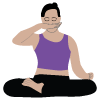 | First, a point is fixed at 4 to 5 inches from nose tip using the hand. Then the hand is removed and concentrate on that point. | Increases awareness and reasoning power. |
| 5. | Kaki mudra | Crow’s beak gesture |  | Air is sucked in through rounded lips keeping the tongue relax in the mouth. | Prevents the signs of aging like wrinkles, cures respiratory diseases |
| 6. | Nasikagra Drishti | Nosetip gazing |  | The gaze is fixed down at the tip of the nose. | Good for calming and stability of the mind, stress relief, improves concentration |
| 7. | Unmani Mudra | Attitude of mindlessness |  | Eyes open widely, awareness is fixed at Bindu, and then with breathing out, awareness is drawn one by one to lower chakras. | Stimulates all the energy chakras and balances doshas. |
| 8. | Bhujangini Mudra | Cobra gesture | 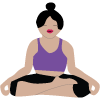 | From a sitting posture, lean forward, lift the chin up then air is gulped through the mouth to the stomach. | Cures digestive disorders, improves respiration and regulates eating habits. |
4. Bandha Mudra (Locks)
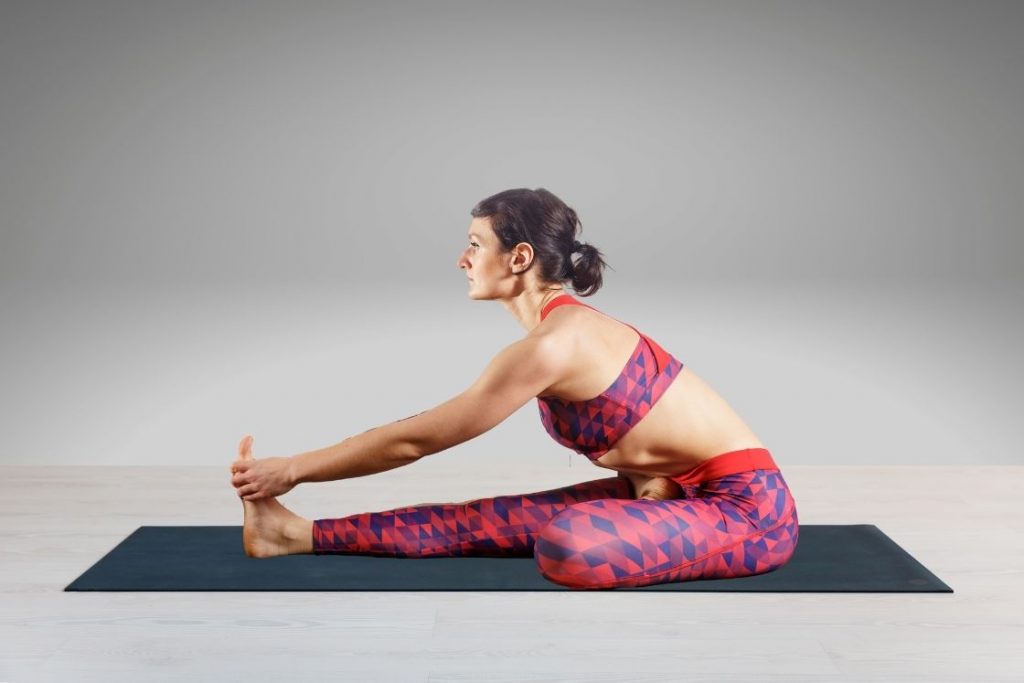
Bandhas with mudras utilize the engagement of subtle skeletal muscles (vocal, respiratory & pelvis) to hold the Prana. This Prana holding awakens the kundalini energy in the body.
| S.N. | Mudra | Meaning | Picture | Description | Benefits |
|---|---|---|---|---|---|
| 1. | Jalandhar Bandha | Throat lock | 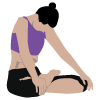 | Chin to chest locking throat | corrects double chin and prevents all the disorders of the thyroid gland |
| 2. | Uddiyana Bandha | Abdominal lock | 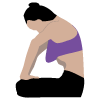 | Pulling abdominal muscles in and up | Strengthens abdominal muscles and diaphragm. improves digestion |
| 3. | Mula Bandha | Root lock | 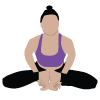 | Contract pelvic floor muscles and pull them up | Kundalini awakening, stimulates the nervous system |
| 4. | Maha Mudra | Great seal | 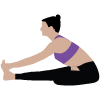 | All three bandhas are performed altogether after sitting in Janu sirshasana. | Destroyer of all 5 kleshas (sufferings), muscle strengthening, enhances immunity |
5. Adhara mudra (Perineal Mudra)
Adhara or Perineal mudra contains the involvement of the pelvic floor area to stimulate the sacral chakra, which in turn harness sexual energy in the body.
Practicing Adhara Mudra helps energy to redirects into the solar channel (Pingala Nadi) of the body.
| S.N. | Mudra | Meaning | Picture | Description | Benefits |
|---|---|---|---|---|---|
| 1. | Vajroli Mudra | Thunderbolt gesture | 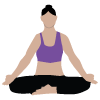 | Awareness is cultivated to the muscles around genital organ and then with full efforts, these muscles are contracted. | sexual potency, prevents premature ejaculation, and improves the vigor |
| 2. | Ashwini Mudra | Horse gesture | 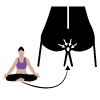 | The anal sphincter muscle is rhythmically contracted. | Effective in piles, Irritable bowel syndrome (IBS) and urinary incontinence. |
| 3. | Maha Vedha Mudra | The great penetrating mudra | 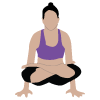 | Awareness is focused on the root chakra to activate it. | Awaken psychic faculties, stimulates your endocrine system |
| 4. | Maha Bheda Mudra | The great piercing mudra | 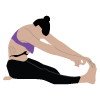 | Awareness is lifted from the root chakra up piercing all chakras one-by-one to the crown chakra. | Prepares the mind for meditation, no fear of death and decay. |
How to Do Yoga Mudras?
- Come into a comfortable posture – Mostly practiced hand mudras are performed in a meditation sitting position such as Easy pose (Sukhasana), Lotus pose (Padmasana), or Hero pose (Virasana). However, you can even do some mudras while standing relax, or sitting on a chair if you’re not comfortable with sitting on the ground.
- Heat up the hands – Before practicing any hand mudra gently rub your hand and then put them on abdomen facing navel for a while. It will activate the nerves on your hands.
- Press fingertips together – After warm-up your hands, bring your fingers to the relevant yoga mudra position and press fingertips gently (that much so you can feel the contact between fingers). In most meditative mudras, after attaining a mudra, the back of the hands are placed on the knees.
- Hold the mudra – Keep hands in relevant mudras in a manner that fingers should not move. At first, hold the mudra position for at least 12 breath counts, and then increase it in a period of 5 minutes in one sitting.
Working Principle of Mudras
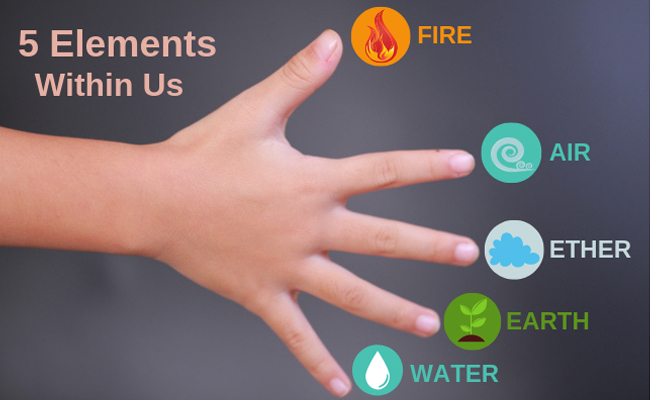
The working of yoga mudras is based on the principle of Pancha Mahabhutus, Chakras, and the network of nadis spread throughout the body.
Five fingers we use in Hasta mudra actually comprises the 5 main elements of the body;
- Thumb – Fire element – responsible for our needs like hunger, thirst, and sleep.
- Index finger – Air element – responsible for movement and breath.
- Middle finger – Ether element – responsible for inner wisdom, intuition and determines our fears
- Ring finger – Earth element – responsible for bodily composition like bones and tissues, flesh and skin, and hair.
- Little finger – Water element – responsible for bodily fluids such as saliva, blood, sweat, urine, and semen.
When there is an imbalance in these 5 elements, it can result in a disruption in mind and body to experience the ill effects of diseases.
In the practice of yoga mudra, different elements of the body are fused together. When a mudra is keep maintained for a certain time, this fusion of different elements brings a state of balance among 5 elements. It ensures better health and wellness of practitioners.
The way we arrange fingers in a yoga mudra shows whether it will increase or decrease or balance one of five elements;
- To balance the effect of an element – The corresponding fingertip is joined with the tip of the thumb.
- To increase the effect of an element – Thumb is pressed at the base of the corresponding finger.
- To decrease the effect of an element – The corresponding finger is bent down to the base of the thumb.
Are Mudras Scientifically Proven?
Yes, mudras are scientifically proven! There are many studies [efn_note] yoga mudras research https://www.ncbi.nlm.nih.gov/pmc/?term=yoga+mudras [/efn_note] published to date which show the therapeutic use of mudras.
To assess the effect of yoga mudra, S-VYASA University India, conducted a study in which they found holding a hand mudra for 20 minutes or more increases the surge of energy at fingertips. It’s measured by the EPI technique.
In this study [efn_note] Classification of Electrophotonic Images of Yogic Practice of Mudra through Neural Networks https://www.ncbi.nlm.nih.gov/pmc/articles/PMC5934951/ [/efn_note], 61 volunteers divided into 2 groups namely ‘control’ and ‘mudra’ group. In Mudra Group, volunteers were said to sitting quietly with eyes closed in Prana Mudra for 20 minutes. The control group also followed the same procedure, except for not practicing the prana mudra
- In the yoga mudra group, significant changes observed in EPI parameters as compared to the control group.
- The EPI (Electrophotonic imaging) variable, intensity, is a measure of the quantum activity of a subject, measured by keeping all the ten fingers one by one on the glass surface of the EPI equipment. It is represented in computer unit pixels and is a measure of metabolic rate.
Summary
Increased effect size after practicing yoga mudra shows there is a surge of energy occurs at the fingertips when we hold the hand in a mudra for long enough (minimum 20 minutes). Indeed, mudras direct energy towards the body and prevent it from decaying outwards.
How Mudras works
Consider, the human body an electric circuit in which current (energy) is flowing through nadis.
These nadis connect the different parts of the electrical circuit (body organs). There are 5 main switches of the human body circuit which either begin or end in hands or feet.
When you hold or press a particular finger in yoga mudra, the corresponding energy center or gland stimulates in the brain (Power supplier of the circuit). In this way, the brain receives a signal to alter the energy pattern within the body by regulating the Prana flow.
Conclusion
Yoga mudra is a subtle but most vital part of yoga because it gives you the ability to direct the energy within the body in different ways. The asanas and pranayamas can be understood as a preparatory practice that cultivates awareness of having Prana within us. Then comes the practice of mudras which lets you interact and manipulate the pranic energy.
This is the reason in hatha yoga tradition, mudras are practiced only after proficiency in Asana, Pranayama & bandha.
Mudra is associated with the changing mental and spiritual features of an individual. This change through mudra lets channelize the internal energy by affecting sensory glands, veins & organs of the body.
Yoga Mudras FAQs
In yoga, there are more than 399 mudras mentioned in different texts and by different yogis. However, in tantric rituals, 108 mudras are used. Besides, taking yogic texts as a reference, in Hatha yoga pradipika 10 mudras are described, and in Gheranda Samhita, 25 mudras are described.
Mudras usually start showing the effect in 4 weeks when done consistently. If you’re going through some chronic diseases, it might take a little longer, around 6 to 7 weeks. Mudra’s working efficiency depends on your practice consistency and the current physical condition.
There is no harm in practicing yoga mudras during periods. In fact, some mudra (Apana mudra) helps to regularize the menstrual cycle. As per the yogic literature, there are two movements of energy within our body, upward movement is refereed as Prana energy and downward is Apana energy. The very simple logic behind practicing mudras during the menstrual cycle is that it’s downward flow of energy (Apana movement). By the practice of mudra, periods pain can be eased by regularizing Apana movement.
Yes, mudras mechanism of healing can be understood by the fact that acupressure points are present on hands. When we join fingers in the different arrangement in a mudra, acupressure points of the respective parts get stimulated. In this way, mudras open the blockage in the particular nerves of the body by stimulating acupressure points. Hence mudras have a healing effect.
Hold a mudra for at least of 15 minutes in one sitting by exerting a very gently pressure between fingertips. In yoga, a mudra should be practiced for 45 minutes in a day. Because 45 minutes period may sound daunting to many people, so for convenience, a mudra is practiced 3 times a day.
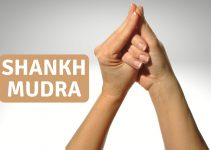
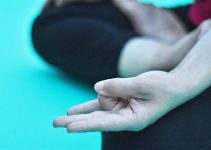
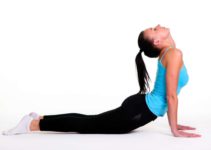

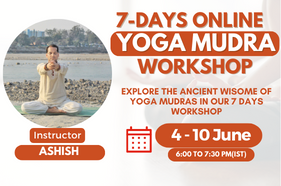
Can mudra practice help in controlling Cholesterol levels? If yes could u pls explain which one should be followed and how long?
Yes, there are several mudras one can practice to lower the bad cholesterol levels – you can check out these “Mudras for a healthy heart“. For example, Surya Mudra and Ganesha Mudra is the best you can practice for 30 to 45 minutes each day.
Ashish, I have been practicing visualization for goal manifestation since around 10 years. All of a sudden for the last 5 days, I am not able to visualize any images of objects/people or colors when I close my eyes – it is just like a plain black screen. How can I get back the ability to visualize upon closing eyes?
It’s a very different & heart breaking experience. Please suggest on what can I do to get back to normalcy.
Vaishnavi I am not such an experienced practitioner of visualization techniques as you seem to be, 10 years is really a long period! Though if you’re looking for mudra’s ways to help you in this condition, I suggest practice Kubera mudra in guided meditation and surabhi mudra. Just do these two mudras before your regular practice and then try visualizing on goal with closed eyes. I have practiced these mudras and it has worked well in goal manifestation, However, exactly for the visualization case, I don’t have a particular experience.
Thanks Ashish. I do visualization using Chinmaya mudra.
Current problem I am facing is not related to visualization technique. It just about closing eyes & trying to imagine any place/fruit/person/color – not particularly for goal manifestation, but any time in general. At any point of time, we would be able to just close eyes & imagine objects/place/people/colors/etc. All of a sudden since last 6 days, I am not able to do this – when I close my eyes its just a plain black screen & how much ever I try hard, I am not able to imagine objects/place/people/colors/etc, not even the faces of my family members.
I need help in coming out of this problem.
Vaishnavi I found a related article to this; they called this neurological condition Aphantasia. Very rare, when a person doesn’t see images when they try to CREATE an image in their “mind’s eye” but can be corrected by working with your mind. I will share the article with you through email. Hope it will help.
Hello and thank you for your site. A friend recommended your site to learn about mudras. He suffers a similar problem with sciatica and perineum pain and impressed that mudras helped him more than anything. Since some kind of injury last winter (March) I have been doing physical therapy and deep breathing, and now Tai Chi for a pudendal compression (as diagnosed by a physical therapist), and have made much progress, though there is still dorsal nerve aggravation in the genitalia. He urged me to seek out the correct mudra, and, frankly, I am overwhelmed by the information. Can you find time to direct me to the finger/hand mudra where I may start with 15 min or 30 min sessions. ? I would be very grateful. It is a debilitating occurrence for many men, bicyclists and composers who sit too much in incorrect postures and damage themselves. Thank you.
Silvio for such a specific condition related to the pelvis or genitals, a hand mudra may not show you effective results. Other than hand mudra, in yoga there are other types of mudra too which especially work for relaxing pelvic floor muscles; they are mentioned under “Adhara (Perineal) mudra” in this article.
Vajroli and Ashwini Mudra will definitely help you with this.
Thank you very much, Ashish. I will investigate these.
P.S. I will start with Ashwini Mudra, Ashish. That looks more approachable at my level, given my anxiety around the condition, and see how improvement arrives. It seems like the former could perhaps complicate my condition without proper and slow introduction and attainment of muscle control. Thank you again.
Hello Ashish,
I want to calm/slow myself down and be composed/confident/controlled in general and especially in pressure situations like an interview or on a stage. I tend to speak fast (normally and even more in pressure situations), eat fast and my response might come across to other person as rude/abrupt etc.,
Could you please help me with this?
And Thank you so much for this article. Quite useful.
Vamsi as you have asked this question in this article, I think that you’re looking for a solution to this through some mudras practice. I think meditation mudras will really help you cope with this behavior. If you can do, devote some time of your daily schedule to meditation in Gyan Mudra or Dhyana Mudra.
There is a psychological fact, persons who usually speaks less but when speak, speaks fast; it’s said they keep secrets or they aren’t able to express themself. For this, you can practice Shankh Mudra without being in a meditation session.
Yes. I am looking for mudras.
Regarding Shankh mudra, since it need not be done in meditative pose, can it be done while am at work or in a meeting where am not concentrating on it but rather being casual about it? Am sorry if this comes across as a naive question, am totally new to this.
Thanks Ashish.
Shankh mudra I referred for speaking issue; however, if you want something you can do at work to calm yourself down then you can try chin mudra. For this, bend your index finger at the base of the thumb, rest three fingers as it is and bring this hand arrangement on the knees keeping palms facing downward. It will help you to be grounded and connected in realtime.
Hi Ashish!
I m 48 years old.
Pse suggest which Mudra benefits & cure Naval Displacement (Nabhi Chakra). Tkd
There are many mudras for navel displacement; apana mudra, shankh mudra, prithivi mudra. All these you can do while putting hands in mudra near navel for better effectiveness.